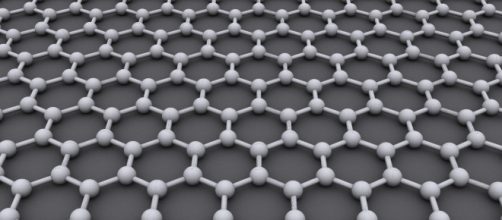Surfing the web the other day, I came across a science article describing how electrons in a 3 layer sandwich of different types of graphene jumped from the top layer, to the bottom without ever being observed in the middle layer. I know what you’re thinking at this point, ‘I want to gnaw my own leg off because I am so bored’. But wait, this actually gets interesting. This got me thinking, what would happen, if rather than a single middle layer, we used two but entangled them and then pulled them apart? On one side, we would have a top layer and middle layer, or the other a bottom layer and middle layer.
Are you lost? Let me explain.
Entanglement
Entanglement basically gives matter an identity crisis. In the case above, the two layers behave as if they are one, regardless of how far apart they are. Touch one in New York, the other will feel it in Tokyo instantly. There are a number of theories as to how this all works, but we know that it does work even if we don't fully understand it. So, if electrons were jumping from the top to the bottom without being in the middle, with an entangled middle, could we make them jump across a room? Or the Atlantic ocean?
Experimental Setup
What I am attempting to describe here is an experimental setup for what is best described as a 'hyperdimensional diode'.
This is not quantum teleportation, where we transfer the properties of a particle, but actual teleportation where we transmit the particle itself from one location to another in an instant. A MoS2 layer paired with a WS2 layer and MoSe2 again paired with a WS2 layer separated by some distance. The WS2 layers are entangled, or at least have their charge carriers entangled.
According to the results of the first Experiment, the electrons skipped the WS2 layer after being liberated from the MoSe2 layer by laser and arrived in the MoS2 layer 1 picosecond later. This according to the researchers was a novel property of Graphene layers held together with van der Waals forces. The hypothesis is that if the WS2 layers are entangled by spin, then the electron should skip this layer, not collapse the wavefunction and arrive across the room in the MoS2 layer.
The experimental setup for this is quite trivial and can actually been done at home. The crystals can be purchased online and Physics World has an excellent video on how to get graphene using the Scotch Tape Method. You will need a laser to liberate electrons in the MoSe2 layer and some way of detecting them at the MoS2 layer. This can be another laser or a sensitive amp meter. Entangling the WS2 layers will be the most difficult part. One method involves placing the WS2 layers in a magnetic field, then stimulating with a laser. Each of these layers have a particular wavelength of light which they respond to, so this method will be fairly easy. The second method is by radio wave stimulation.
Applications
If successful, this opens a world of power and data communications without wires or electromagnetics. No more radios, antennas, Power Distribution grids, etc. Its all a question of scaling this up to practical levels. We could have mobile phones without batteries, electric cars which never need to be charged, centralised power production and no transmission lines and no need for satellites or ocean telecoms cables. A world pretty much without electromagnetic smog. It gets better though, why stop at electrons? With more experimentation, we may be able to get molecules across these gaps, such as water, or even beer. Would you like a phone which could teleport beer? Again, it becomes a question of scaling the technology, in time we could see entire cities without sewage, plumbing or even household rubbish disposal as everything is teleported.
With entangled cell structures, there is no reason why chips could not have thousand, or even millions, of hyperdimensional diodes, all connect to different chips, in different devices. These could factory assigned, or even dynamically created allowing for ad-hoc networking and power solutions.
Its not without its downsides though. It means the world will get a lot darker for security services. This technology will provide secure point-to-point communications with no meta-data on who is talking to who, or mapping data for networks which can normally be seen.
Will it work? There is good reason to be hopeful, but the most fun will be in the trying.


